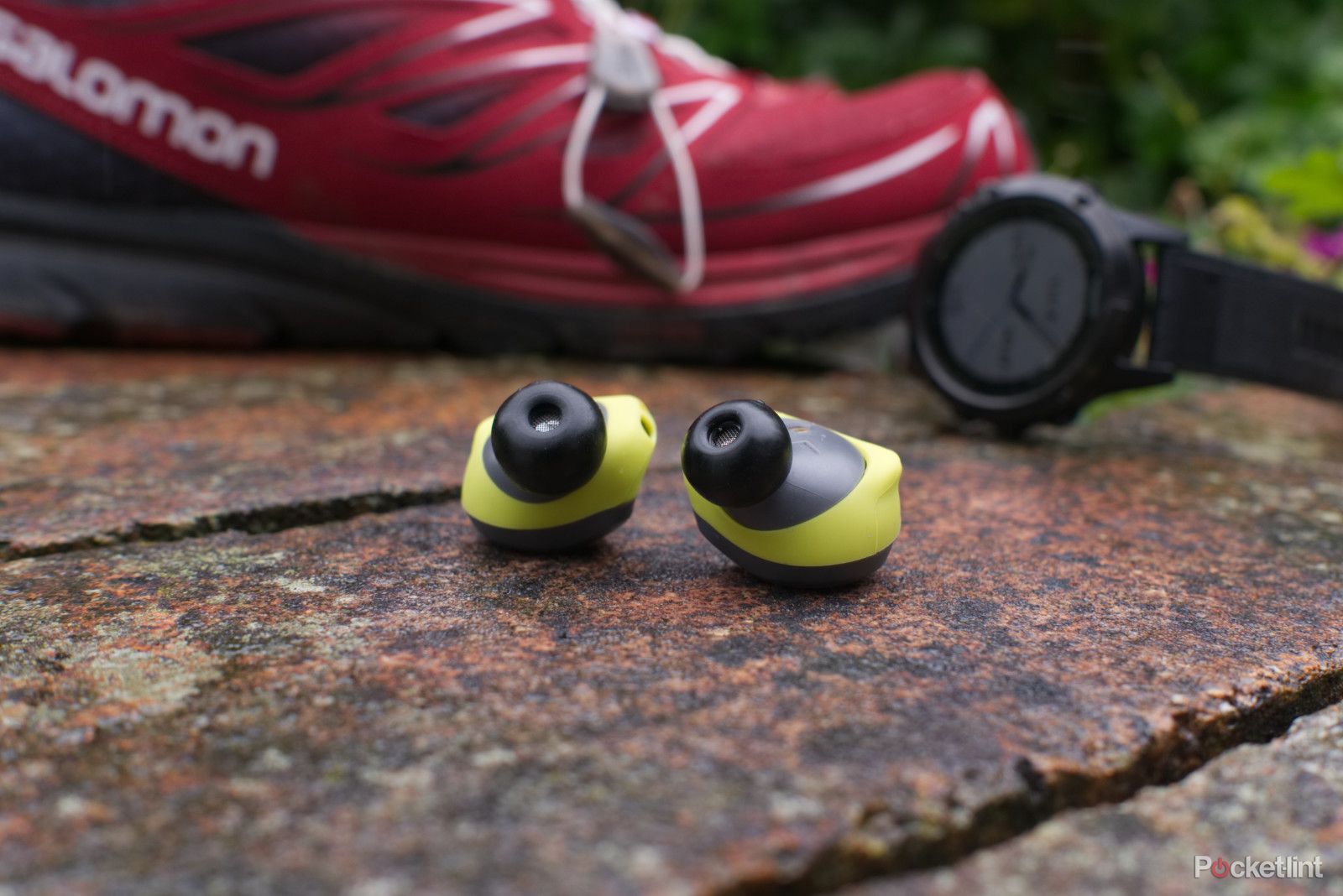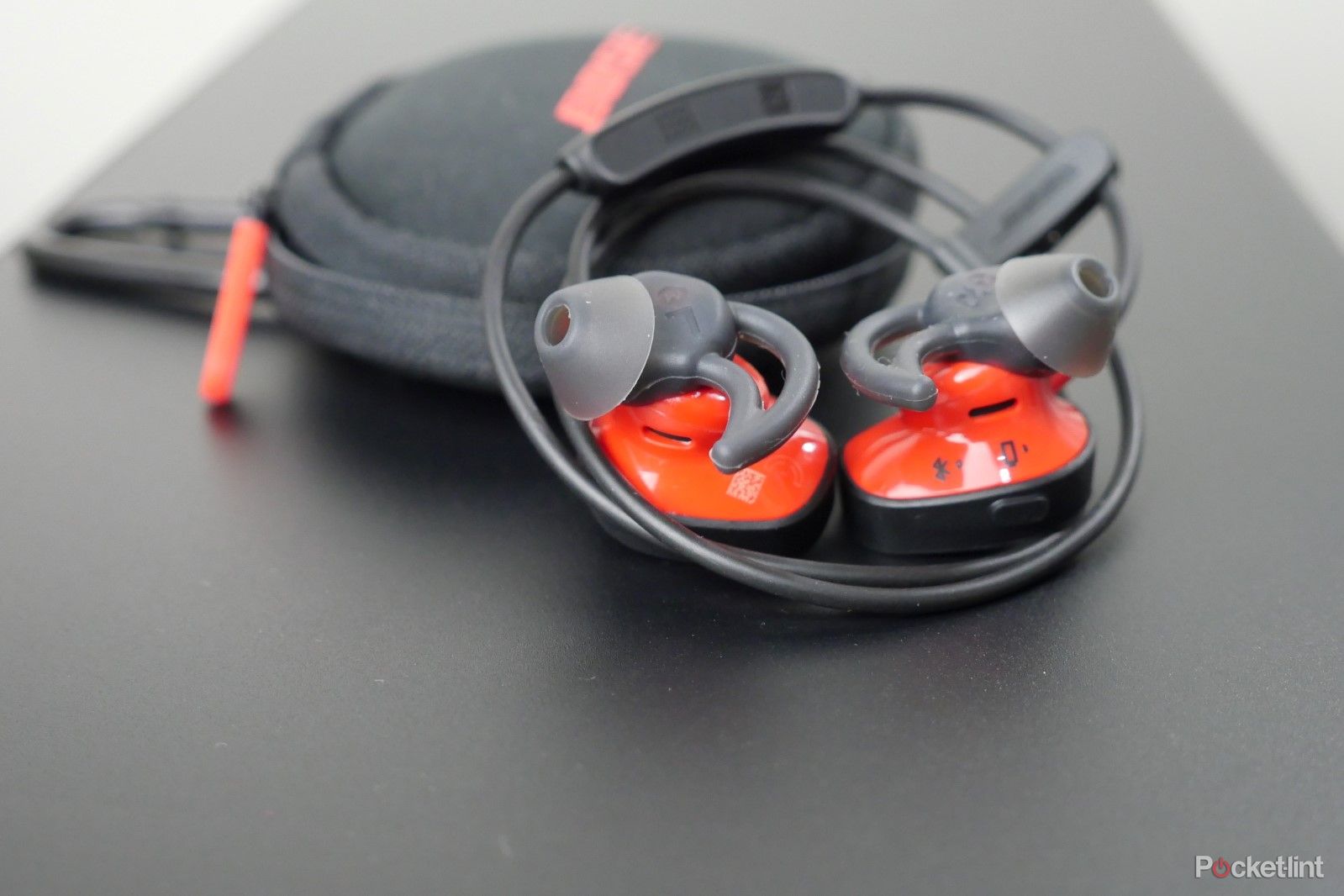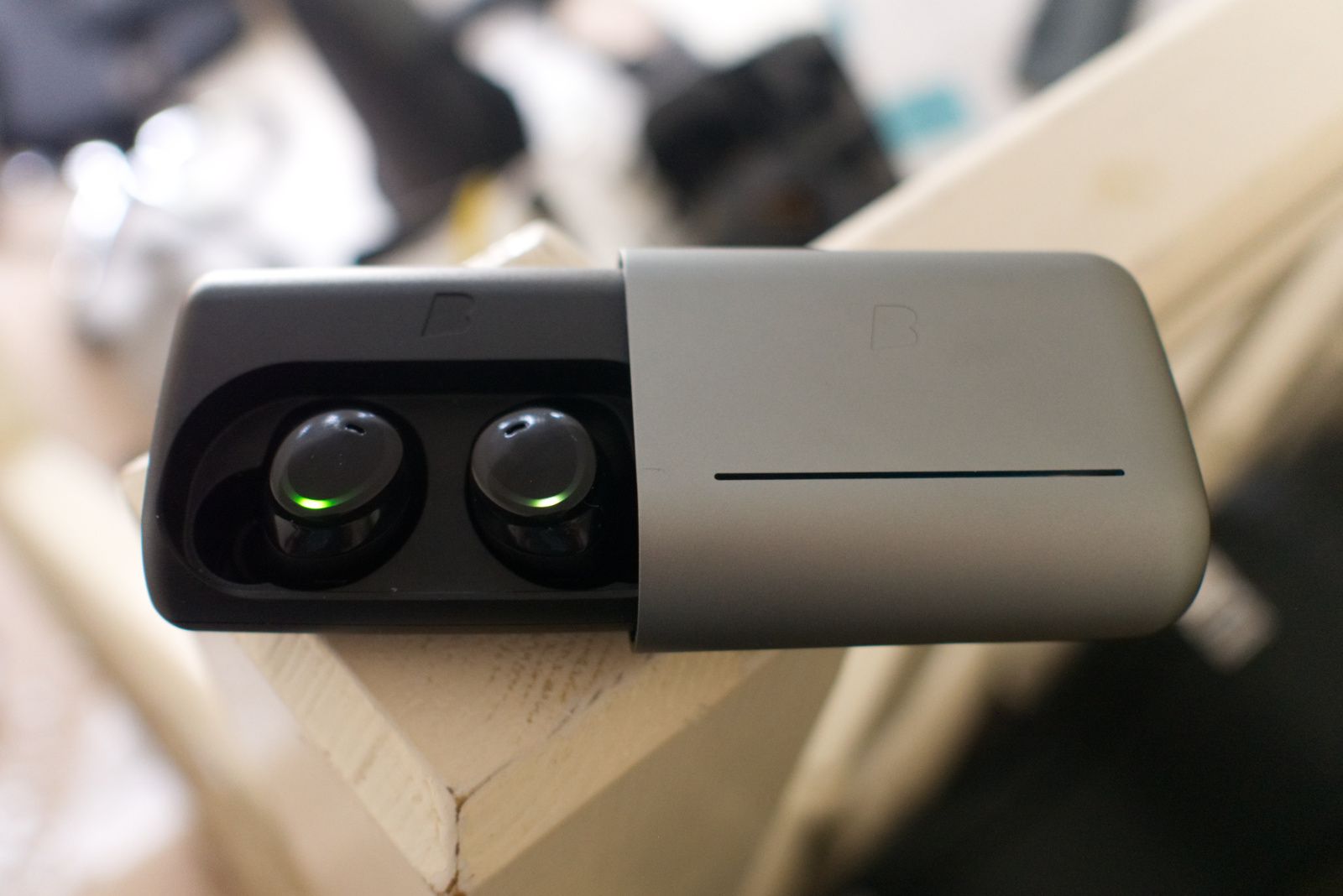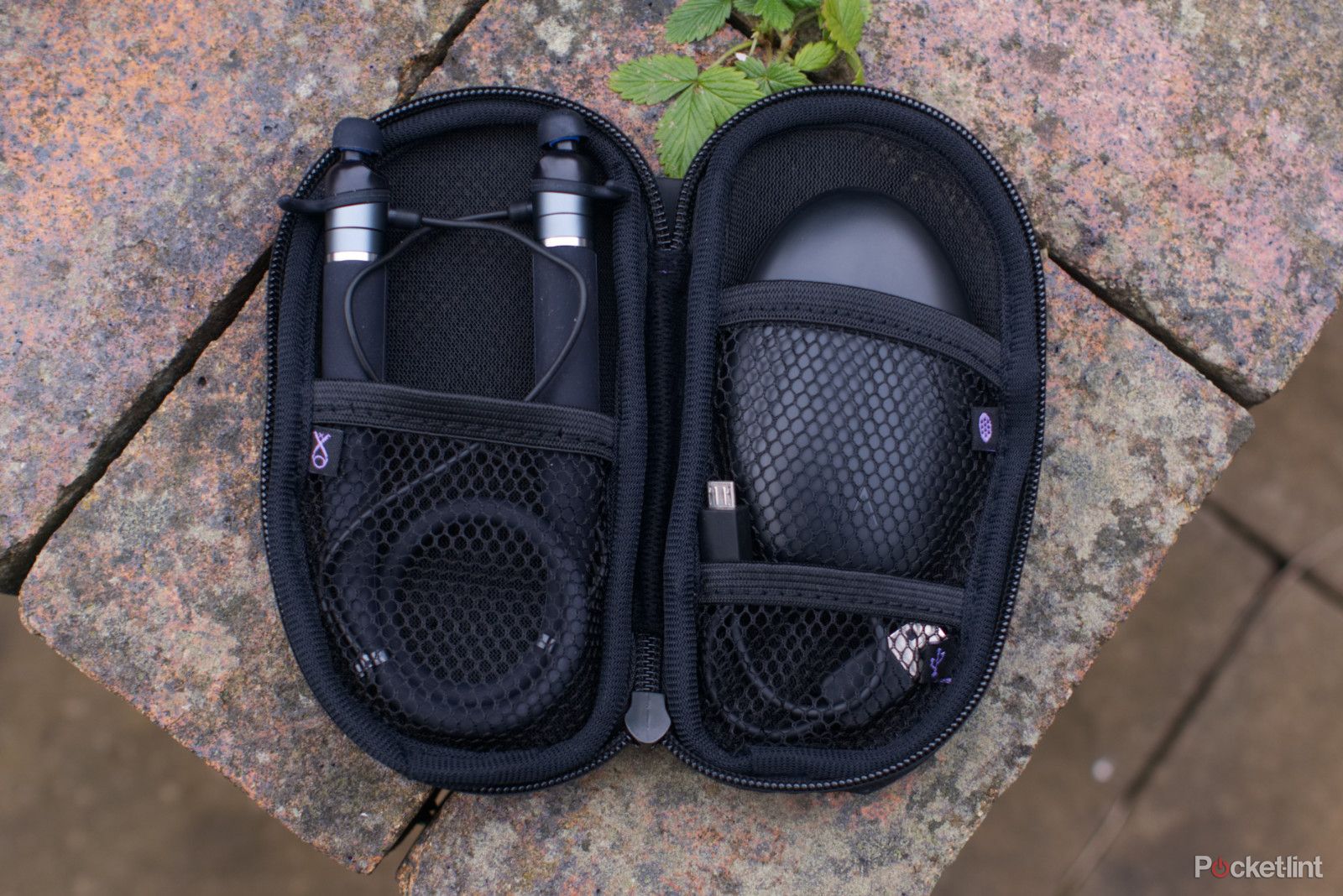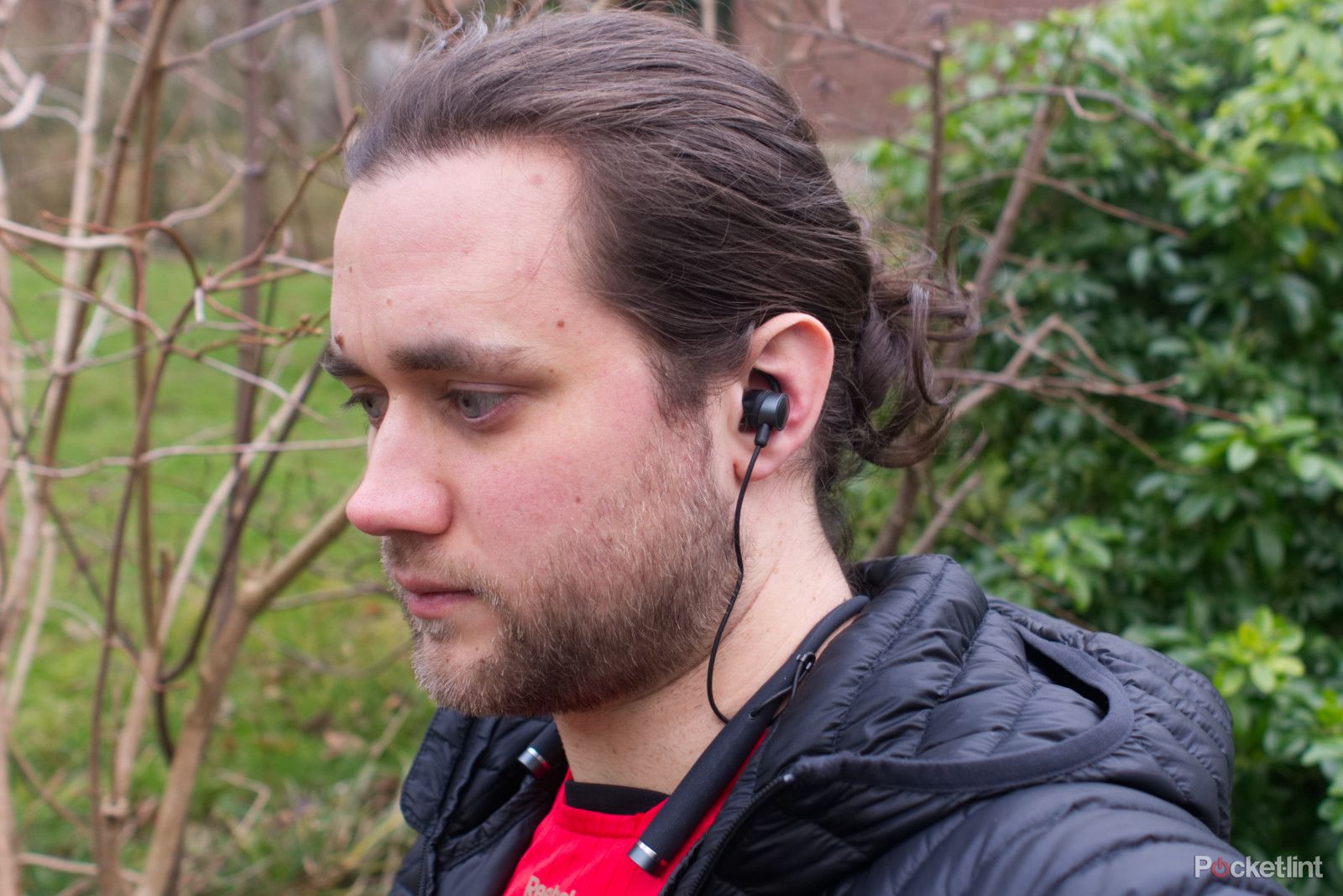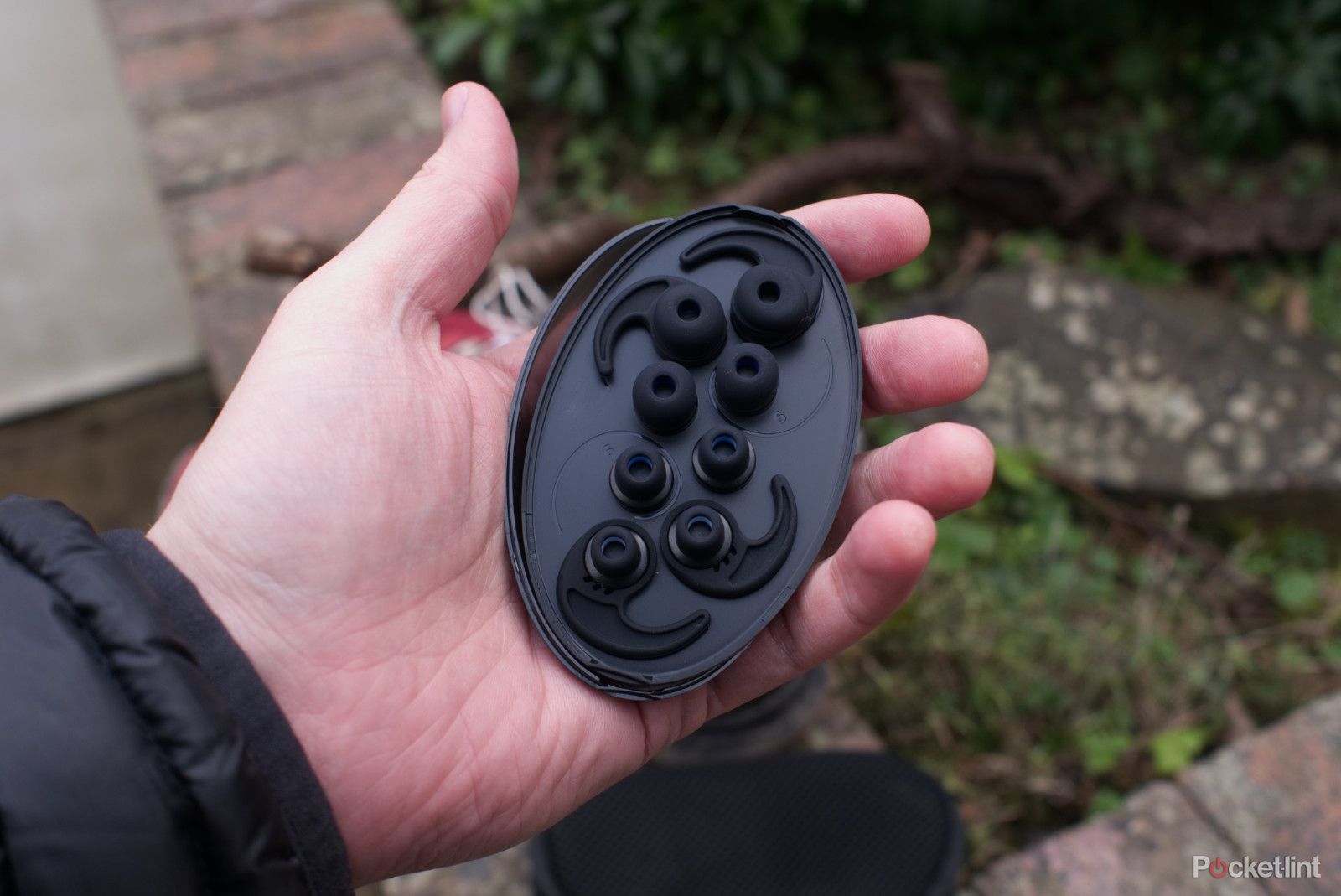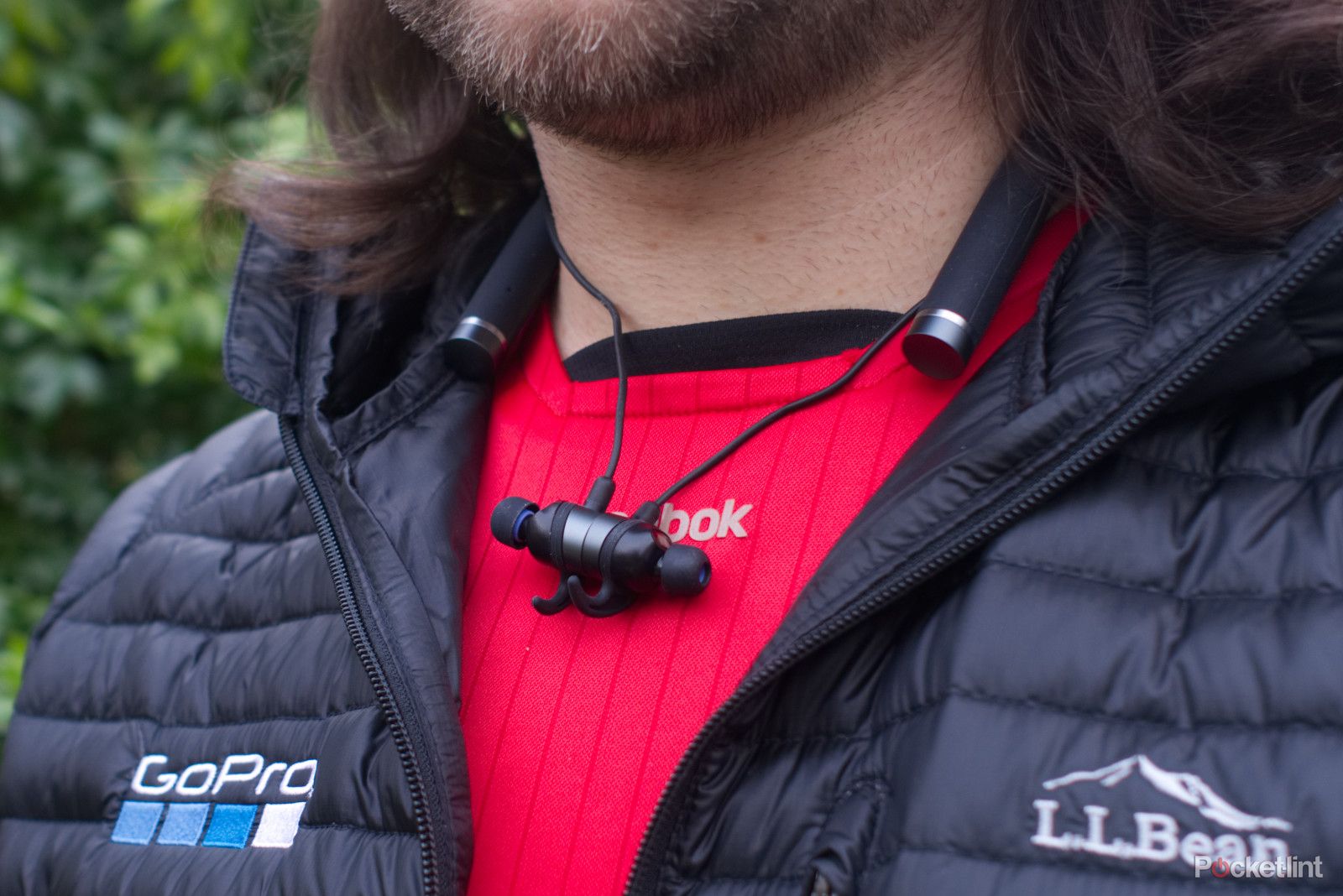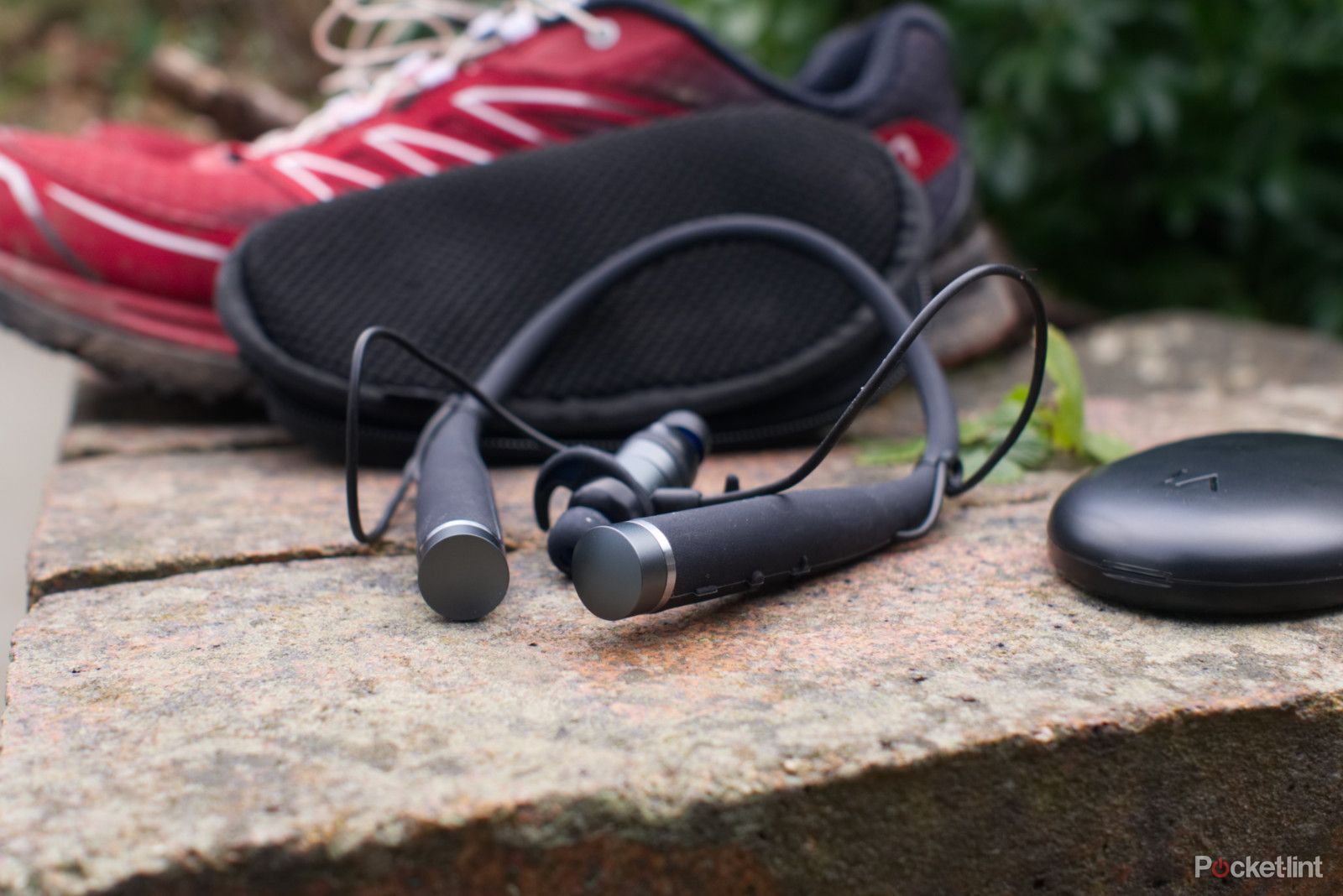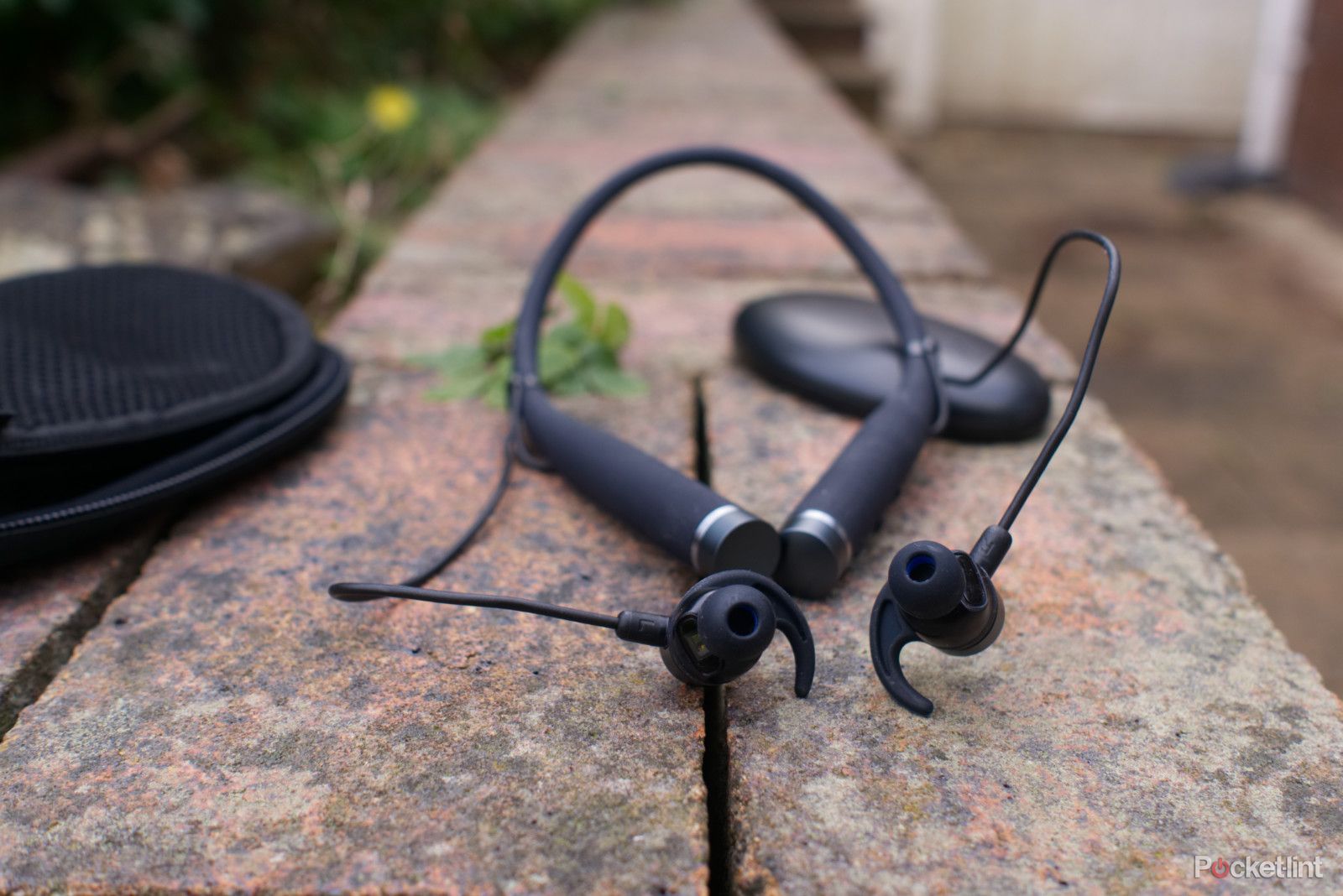Not everyone can afford a personal coach to get them progressing in training. Likewise, most people soon get bored by the pre-recorded, not context-aware tips given by the usual training apps, like the Couth to 5K apps, for example.
Our quick take
The Lifebeam Vi is one of those rare products that genuinely makes your workouts more effective, especially if you're not a massively experienced runner. With its AI coaching and tracking combined in a well-designed earphone, it delivers timely coaching with enough frequency to spur you on and keep you going.
However, the implementation isn't quite perfect just yet. So while Vi gets more than the basics right, it doesn't reach its fullest potential. Quirks like Spotify cutting-out during runs being one such example of likely software improvements to be made. Plus the sound, while decent, could be even cleaner for those daily commutes.
With some design refinement and smarter yet coaching tips, the Vi could well be the best thing to happen to sports headphones and the fitness tracker market in a long time. After a month of use, it's become hard to imaging going running without them.
Alternatives to consider
Jabra Elite Sport (2017)
The Jabra lacks the smart coaching element of the Lifebeam Vi, but with built-in motion and heart-rate sensors, plus waterproofing and a completely wire-free design, the Elite Sport does deliver stellar performance. Jabra's own app even does a decent job of tracking your activity and giving you relevant updates during your sessions at predetermined intervals.
Read the full article: Jabra Elite Sport (2017) review
Bose Soundsport Pulse
Similar to the Jabra, the Soundsport Pulse doesn't offer any coaching. If you're already well stuck into using Strava (or another tracking app) for everything, however, then the Soundsport Pulse give great sound and heart-rate monitoring.
Read the full article: Bose SoundSport Pulse review
Bragi Dash Pro
When you think of smart, tech-filled earphones, the name Bragi might come to mind. The Dash Pro is wire-free, complete with a heart-rate sensor, motion sensors, and an app that tracks all your data. Accuracy and reliability isn't as high compared to the Vi, however, plus the Bragi offers no AI coach either.
Read the full article: Bragi Dash Pro review
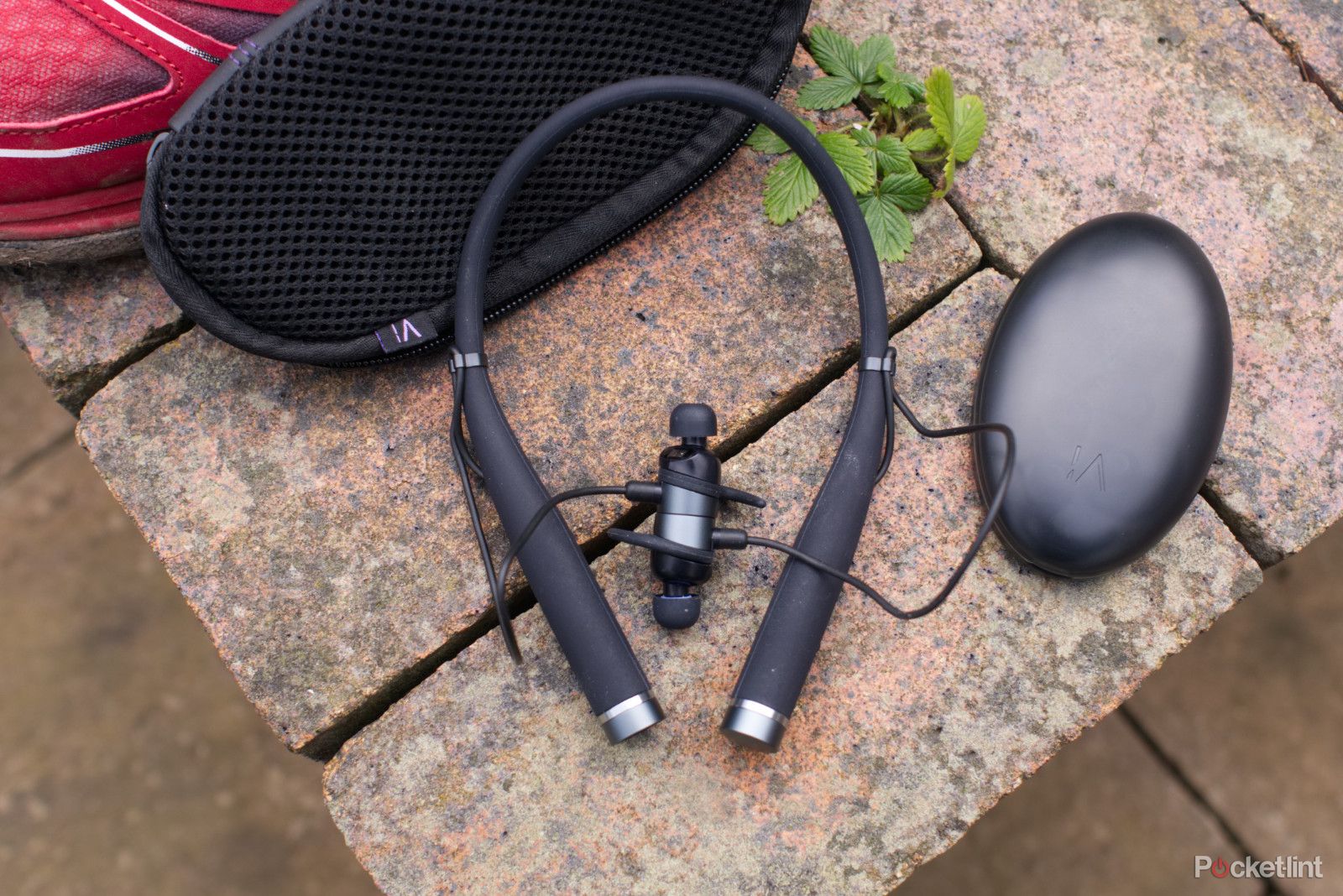
Lifebeam Vi - 4.0 / 5
| FOR | AGAINST |
|---|---|
|
|
Lifebeam Vi
What if there was something that solved those problems? Welcome: the Lifebeam Vi. This pair of in-ear headphones offers real-time coaching as you run, walk or cycle, using data it's collecting from you as you work out.
- 7 best workout headphones you can buy today
- Best in-ear headphones: 10 great wired, wireless and wire-free earphones
Design
- Neckband design
- Magnetic clip-together headphones
- Weigh: 35g
Neckband earphones are becoming more commonplace. We've lauded their benefits many times over the past 12 months. Done properly, they're comfortable to wear, hard to lose, and offer better wireless and connection performance than the ol' hang-off-your-ears types.
Unlike some we've tested, the Lifebeam Vi's neckband is not rigid at all, at least not around the back of the neck where flexibility is required. This ensures it snugly fits around necks of any size, without being too tight or too loose. What's more, it's covered in a soft, grippy rubber material to ensure no slipping around during workouts. It's effective, and we never once felt like they were shifting during our runs.
One of our favourite design choices is the use of magnets and metal. The left earbud is slightly convex, while the right is slightly concave, ensuring the two snap together perfectly when not in use. But that's not all: at the end of each side of the neckband, the end caps are designed in this way too, so you can snap the earbuds to them as well, if you prefer.
As with most neckband types, the earbuds are connected to the collar using some fairly basic cabling. Except in this instance, the cable is gripped onto the neckband using some metal clips. These can be slid up and down to adjust the amount of slack in the cable. The clip design isn't entirely elegant, but it is secure, which is the most important thing.
With sports earphones it's key that you have the correct fit in the ear canal, particularly when the earphones have a heart-rate monitor built-in. If it's too snug, it hurts, if it's not snug enough they heart-rate monitor won't deliver an accurate read, plus the earphones will likely fall out. Thankfully, Lifebeam's designers thought through all of this.
Vi ships with five different sized tips and three sizes of ear-hugging fins, to ensure the fit is as comfortable and secure as can be. To make things more convenient, the extra tips and fins ship inside a slender oval carrying case, which you can easily carry on your first run to test different sizes. The defauly tip was perfect for us, though, so we didn't need to go through that.
Perhaps the biggest surprise is that - while weather-resistant - the Vi lacks an official IP certification against water or dust resistance. On the plus side, we took them out for all of our runs between the beginning of December 2017 and the first half of January 2018, regardless of the weather, and the couple of times it did rain (once quite heavily) there have been no issues as a result. Still, the official rating would make for a stronger sell.
Features and performance
- Heart-rate monitor
- Speech recognition
- Barometer and motion sensors
- In-ear detection
As headphones go, the Vi is among the most feature-rich out there. That's thanks to its plethora of built-in sensors and processing power. Looking through the list ensures you don't mistake them for anything other than high-end sports-focused earphones.
Inside there's a 6-axis accelerometer as well as a gyroscope which, together, measure motion, orientation and angular velocity. There's a barometer for measuring elevation and a heart-rate sensor which is built into the left earbud. The right earbud has a touch-sensitive panel for activating voice commands during a run, and both earphones have ear detection sensors, so they can tell when you have them in your ears and when you don't.
Earphones packed with a few too many features often don't perform too well - but that wasn't the case with the Vi. We tested them over 10 individual runs of around 30 minutes each and found that - as far as fitness-tracking goes - they're on par with wearing a dedicated sports watch.
The heart-rate information matched almost exactly with the readings picked up by the Garmin Vivoactive 3 we were wearing during a few of the runs, with the average matching precisely what we saw on the watch.
Similarly, our average cadence (or steps-per-minute) was almost identical too, differing by just one or two steps. This could be explained by something as simple as not stopping the activity at exactly the same time on both devices. Even the calories burned calculation was close to identical.
Two feature that didn't work as reliably on the Vi was related to third-party services, namely Spotify and Strava. Before choosing a workout type, you can choose to have either local music or a Spotify playlist. Being Spotify subscribers, we opted for a playlist and ensured we chose one that was downloaded onto the phone for offline use. On all the runs the Spotify playlist stopped playing roughly halfway through - around 15 mins into the run - and nothing we did would get it playing again. We tried skipping forwards, backwards and hitting the play/pause button on the neckband a number of times. Without trying to wrestle the iPhone out of its belt, and manually launching Spotify, it wouldn't get going again.
AI Coaching on the run
- Coach uses run performance to "coach"
- Advice depends on your focus
If you've ever started trying to run for the first time, and used apps to help you, then there's a high possibility that you've come across apps like Couch to 5k. Pretty much all of them use pre-recorded messages that aren't tailored to you, but rather just tell you when to start running and when to stop. That's fine, but Vi goes one better.
With the AI-powered coach in the Vi headphones, the experience is nothing like that. In fact, it's pretty great. Rather than give you pre-set spiel, it looks at the various data points that it's tracking and then gives you suggestions and helps you with appropriate tips during your run.
As an example, our main focus was set to "run further". So, without fail, 10 minutes into each of our 30 minute runs, it would inform us that we needed to increase our step rate without increasing our pace, and help us along by playing a beat to step in time with. Smaller, lighter steps meant less effort and less impact on the joints, then enabling you to run further.
We also had the choice of replaying this "game" by tapping the right ear bud and saying "step to the beat". On this note, it's worth noting that - like a lot of other voice command-based technology - whether or not Vi hears you properly is hit and miss. It's probably a good thing then that it's restricted to just a few commands, like asking for an update on stats.
One of the best parts of the Vi assistant is that it takes its time to get to know your performance and your typical stats. For us, it took just over two hours of running before it felt it had a handle on the way we ran. After that, it was able to tell us when we hit our regular "cruising speed".
It also seemed to know when we were running with bad posture. Arriving at the top of a long hill, it can be tempting to slouch, but Vi was there ready with helpful reminders to lift our head up, straighten up, relax our shoulders and bring our arms in. Whether that was contextual awareness, or just standard reminders is unclear.
On the topic of contextual awareness, we'd love to see yet more. Given that the headphones have a barometric sensor, and access to weather, time and date, it'd be great to see more fine-tuned coaching based on the steepness of a hill climb, or whether we're running in rain or high sun.
The only mention of hills seems to come when you get the regular time or distance based updates. Even then, it's not useful. Paraphrased "You've run 2km, you've been running for 14 minutes and 45 seconds, your average pace is 7 minutes and 22 seconds per kilometer, your average heart-rate is 178 beats per minute, by the way you're running downhill," is pretty much as good as it gets here. As if we didn't already know we were on a hill.
Another feature we'd love is something similar to what the Garmin watches offer, in knowing how much you suffer - based on heart-rate zones - and then being able to tell you how long you should rest for after training.
The app
- Start individual activities
- Health Kit, Google Fit, Strava and Spotify integration
The Lifebeam app that works alongside the Vi headphones has a number of useful features, but not the depth of information that you might get with something like Strava or Garmin Connect.
Once the earphones are paired and connected, it's a case of opening the app to setup your profile and set your goals. You can set several goals, all the while choosing one as your main focus. As mentioned, ours was "run further". There are coaching programmes available to help you run 5k, 10k, half marathon, walk to run, and weight loss.
At the bottom of the app's home screen is a stack of cards, letting you quick-start an activity. You can choose from a free run, a timed run (set the amount of time you want to run for), a distance run (how far you want to run), treadmill session, walk or bike ride. From this standpoint, that makes using the app ridiculously simple. Just select the activity and your goal, then hit "let's go".
To customise the experience and/or view your stats you access your profile and settings by tapping the little thumbnail in the top left corner. Here, the main screen shows you your current main goal, a button for manually checking your heart rate and today's stats. Scrolling down shows you your overall totals, records, and lists your individual activities in chronological order. Tapping on one workout then brings up the statistics for that particular activity.
As an example, you can tap on a run and see your speed and heart rate, pace and step-rate charts, as well as the total distance, time, elevation and calories burned. You can also scroll down to view the average pace, step rate and heart rate, including personal achievements/records, and get a view of the route map.
You can also choose to share the run, or download it as a file that can be uploaded to other fitness services, like Strava. However, for Strava specifically, this shouldn't be necessary as Vi can auto-share. By toggling the "Connect to Strava" option, your runs should automatically upload to the popular running/cycling network. Sadly, in our testing, this worked maybe twice without issue - the rest of the time we either wore a smart sports watch to track the run, or had to download the file and upload it manually to Strava. If this is to be a serious runner's accessory, it needs more reliability here.
Lifebeam Vi review: Sound
- Harman/Kardon drivers
If you like lots of bass and lots of loudness during workouts, you'll love the Vi's default profile. Heading out for a cold winter's night run is a lot easier when you have a 90s hip hop playlist pumping in your ears. Especially when there's so much bass and groove.
Sitting still, listening to it in the quiet of your office, or home, isn't quite as pleasant. By great earphone standards, the Vi is a tiny bit muddy and lacks total clarity. But that doesn't mean they're not an enjoyable listen. The bass fills out the music, giving it plenty of presence and feel, without killing the treble and mid-level frequencies.
If you really don't like the excessive bass, there is a button within the app that allows you to switch off Bass Boost. By comparison though, without it, music tends to sound a bit flat and lifeless.
Lifebeam Vi review: Battery life
- 4-8 hours (depending on usage)
- Charges via Micro-USB
Given the intense demands on the Lifebeam Vi during workouts, it's no surprise that you'll likely never get to the eight hours maximum battery per charge. With its constant tracking, processing, coaching and music-playing, the Vi is doing far more than a regular headphone would.
It was hard to measure how long the battery lasts from 100 per cent full down to empty. As an example to give some indication, after five runs, totalling just over two-and-a-half hours, plus 20 minutes of just music listening, the battery was down to 50 per cent.
Of course, battery performance is variable in a product like this. With our typical kind of usage - mostly running with some music - we'd get around five-to-six hours of playtime before needing to plug in again.
Lifebeam Vi
To recap
The Lifebeam Vi is one of those rare products that genuinely makes your workouts more effective. With its AI coaching and tracking combined in a well-designed earphone, it's hard to imaging going running without them. It delivers timely coaching tips as you're running with enough frequency to keep you going, and make you better.

